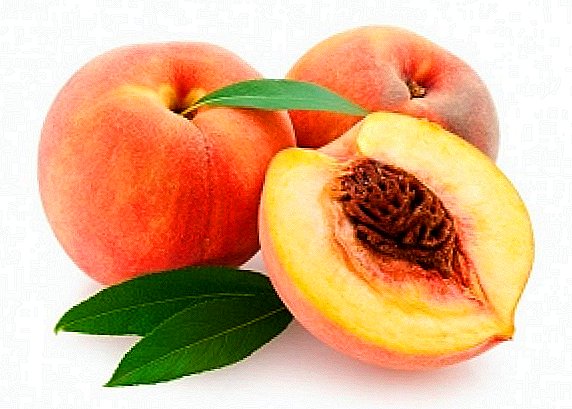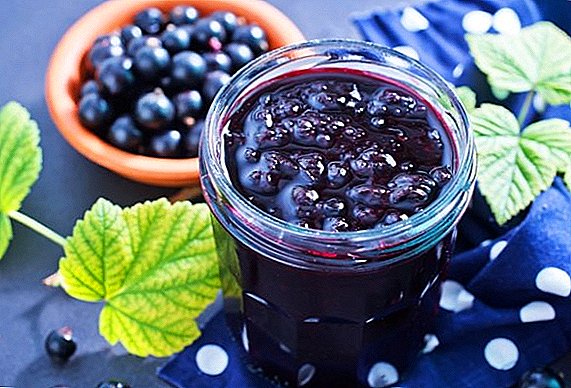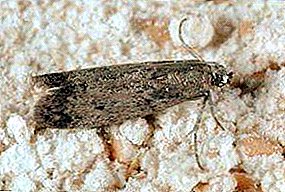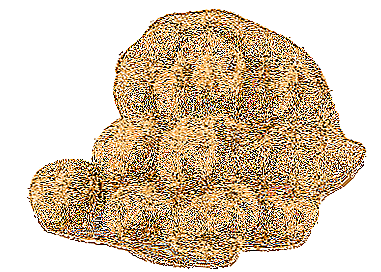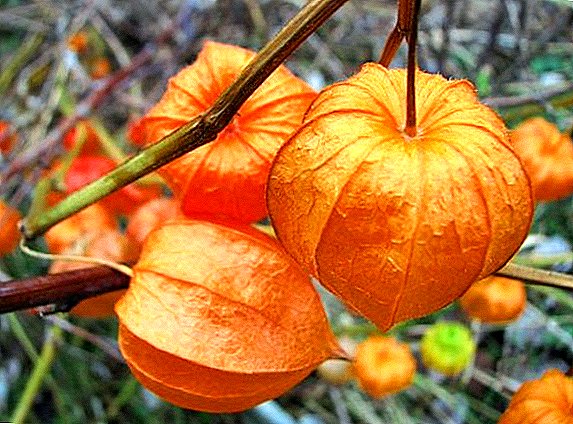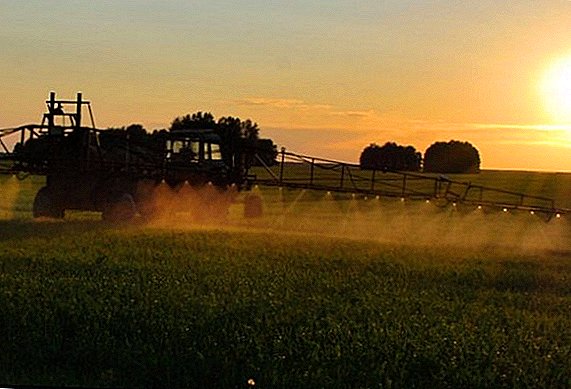 Herbicides - a separate group of biochemical substances, which is designed to combat unwanted vegetation. Currently, their number is large: from the means of continuous action to selective, from emulsions to powders. Such diversity makes it difficult to choose land owners. In this article, we will take a closer look at the mechanisms and methods of exposure, as well as the instructions for use of one of the leaders in the pesticides market, the herbicide Biathlon.
Herbicides - a separate group of biochemical substances, which is designed to combat unwanted vegetation. Currently, their number is large: from the means of continuous action to selective, from emulsions to powders. Such diversity makes it difficult to choose land owners. In this article, we will take a closer look at the mechanisms and methods of exposure, as well as the instructions for use of one of the leaders in the pesticides market, the herbicide Biathlon.

Spectrum of action
"Biathlon" attributed to artificial substances of systemic action, the main purpose of which was the destruction of one-year / two-year-old weeds and other grass-parasites on grain crops. The composition of the drug allows you to effectively deal with all dicotyledonous weeds, including harmful hard-flowering plants, the root system of which is quite extensive and deep. Weeds that are affected by the drug, depending on the speed of their reaction to the pesticide, can be divided into two groups:
- Sensitive: field mustard, field thistle, crow's foot, Tatar buckwheat, field buttercup, field violet, all kinds of alfalfa, common rape, rape, wild radish, field forget-me-not, bitter wormwood and others.
- Middle-sensitive: field horsetail, species of Chistets, field bindweed, horned triad, somnolence, Molokan, Tatar, euphorbiae, field mint, field sow thistle, black nightshade and others.
Did you know? The first herbicide was invented back in 1768 by Gombark and tested on chamomile petals.Its action does not slow down the growth and development of sowing. "Biathlon" has selective properties, which makes the interval of its use much longer. The drug belongs to the class of aryloxyalkanoic acids and sulfonylureas.

Active substance
In the composition of "Biathlon" there are such means: "Elan" (emulsion concentrate), "Stalker" (water-dispersible granules) and "Ducat" (water-dispersible granules). The drug is able to cause weed death due to three groups of active substances:
- 2,4-dichlorophenoxyacetic acid in the form of a complex 2-ethylhexyl ester is a white solid, slightly soluble substance in water, which acts well against chamomile, thistle and buckwheat. Cereals are resistant to 2,4-D.
- Tribenuron-methyl - crystals of white color with a strong odor, suppressing broad-leaved weeds. In cereal plant tissues, the drug very quickly decomposes to non-toxic fibers.
- Triasulfuron is a colorless and odorless solid that has the ability to kill dicotyledonous weeds in winter and spring crops.
Preparative form
Preparative form "Biathlon" is a mixture of emulsion concentrate (EC) and water-dispersible granules (EDC). It is packed in factory sealed binary packages with a volume of 4.5 liters, 0.09 and 0.03 kilograms.
Did you know? Herbicides - incredibly popular product. Every year around 5 tons of drugs are produced in the world, and all of them are not stale on the shelves of stores.

Drug benefits
Based on the mechanism of action of the drug, the following advantages of this herbicide can be highlighted:
- Effective destruction of more than 100 species of parasitic plants.
- The probability of resistance of weeds to the drug is minimal, thanks to the three-component composition of the means of different spectrum of action.
- Excellent synergistic effect between the components, which enhances the productivity of the use of "Biathlon".
- Gentle effect on cereals, lack of phytotoxicity when used according to the instructions.
- The possibility of non-toxic combination with insecticides, which is necessary for the cultivation of a good crop.
- Safety by reducing the amount of triasulfuron in the composition compared to other herbicides.
- Long-term action, the emergence of the need for re-use - an extremely rare phenomenon.
- The “screen adaptation effect” is the prolongation of the action of the drug in the event of the reappearance of weeds, which is facilitated by the combined reactions of tribenuron-methyl and triasulfuron.
Learn how to get rid of weeds and grass folk remedies.
Mechanism of action
"Biathlon" operates in two stages. First, 2,4-dichlorophenoxyacetic acid, as a hormonal substance, penetrates into the weed tissue and slows down the photosynthesis of parasitic plants by blocking the enzyme acetolactate synthase. As a result, the plant begins to malfunction, which is manifested in the deformation of the leaves and stems, loss of color, and then the death of the weed. At the second stage, tribenuron-methyl and triasulfuron negatively affect the production of valine and isoleucine, the most important plant amino acids. As a result, plant cells stop dividing, growing and developing, the body dies out. 

Method, processing time and consumption rate
According to the instructions "Biathlon" is used by spraying with the help of special equipment of wheat and oats. The drug is recommended to treat the weed, which is in the phase of active vegetation at a temperature of 10-25 ° C. Maximum efficiency can be achieved if the parasitic plants are still “young”, when their growth does not reach 15 centimeters and there are 2-10 leaves on the stem. In order not to harm the grain crop, it is necessary to spray it during the tillering period before entering the tube in spring. The optimal rate of consumption of the working solution of the biathlon herbicide is an average of one pack per 10 hectares of planting area - about 200 liters per hectare.
Important! Observe the prescribed dose of the drug, because an overdose can lead to the death of not only weeds, but also sowing, failure of microflora of the soil, as well as harm to your health.To apply the herbicide, you need to choose suitable weather conditions that will last for several days: dry warm weather, wind speed not exceeding 5 m / s. Otherwise, the drug washed by rain will not give the desired result, or freezing will greatly worsen the course of the desired chemical reactions. It is impossible to mechanically affect the soil for 2 weeks after spraying the grain, it will spoil the protective soil "screen" and significantly reduce the effectiveness of the herbicide. During the application of the drug you need to ensure that it does not fall on other sensitive cultures that do not have the ability to resist the action of "Biathlon". Otherwise, you can "poison" your own crop by such actions.

Impact speed
Due to the presence of 2,4-dichlorophenoxyacetic acid in the preparation, the first results of the influence of the herbicide "Biathlon" will be clearly visible after a few hours: the leaves of the weed will begin to wither. Herbicide quite quickly penetrates the plant, having the ability to accumulate in the tissues, deadening them. Young weeds die completely within 3-7 days, for more resistant ones it will take up to two weeks. It is possible that the drug will not kill all the parasitic plants, but in any case it will stop their development, and they will not harm the crops. After all, organisms that do not grow, do not have a special need for nutrients and moisture.
Period of protective action
The drug, used in acceptable doses, will not act on the soil, only on weeds that have been directly sprayed. According to the instructions for the effective destruction of weeds one correct treatment will be more than enough.
Important! You should not reuse the drug if there is a slight weed, otherwise you will provoke the accumulation of toxic substances in wheat and oats.
Compatibility with other pesticides
"Biathlon" refers to potent pesticides, which excludes the use of other dicotyledonous herbicides with it, since it can be dangerous and contribute to phytotoxicity. For the simultaneous destruction of dicotyledonous and cereal parasitic plants, it is allowed to use "Biathlon" in a tank mix with "Fabris". The drug is well compatible with mineral organic fertilizers, various insecticides (chemical preparations for combating harmful insects), growth stimulants and fungicides (biochemical means for the treatment of fungal diseases of plants).
Corsair, Dialen Super, Caribou, Cowboy, Eraser Extra, Lontrel-300 are also considered herbicides for grain crops.

Crop rotation restrictions
There are no serious restrictions on any of the crop rotations provided that the "Biathlon" is used strictly according to the instructions. This is due to the very rapid decomposition of tibenurol-methyl in soils and reduced rates of use of triasulfuron in this preparation three times as compared with other pesticides.
Terms and conditions of storage
Herbicide "Biathlon" is recommended to be stored in a dry place inaccessible to children and animals, without direct sunlight at an allowable temperature of + 1 ... +24 ° С. The shelf life of the drug is indicated on the packaging. After the expiration date of the herbicide is better to dispose of. In some cases, it is possible to test for suitability, after a positive result of which the herbicide is allowed to be used for its intended purpose. 
Any pesticide is a substance of chemical origin with toxic properties, therefore its use must be carried out strictly according to the instructions and according to the purpose. Otherwise, the consequences will be irreversible, and for them the manufacturer of the drug is not responsible.


